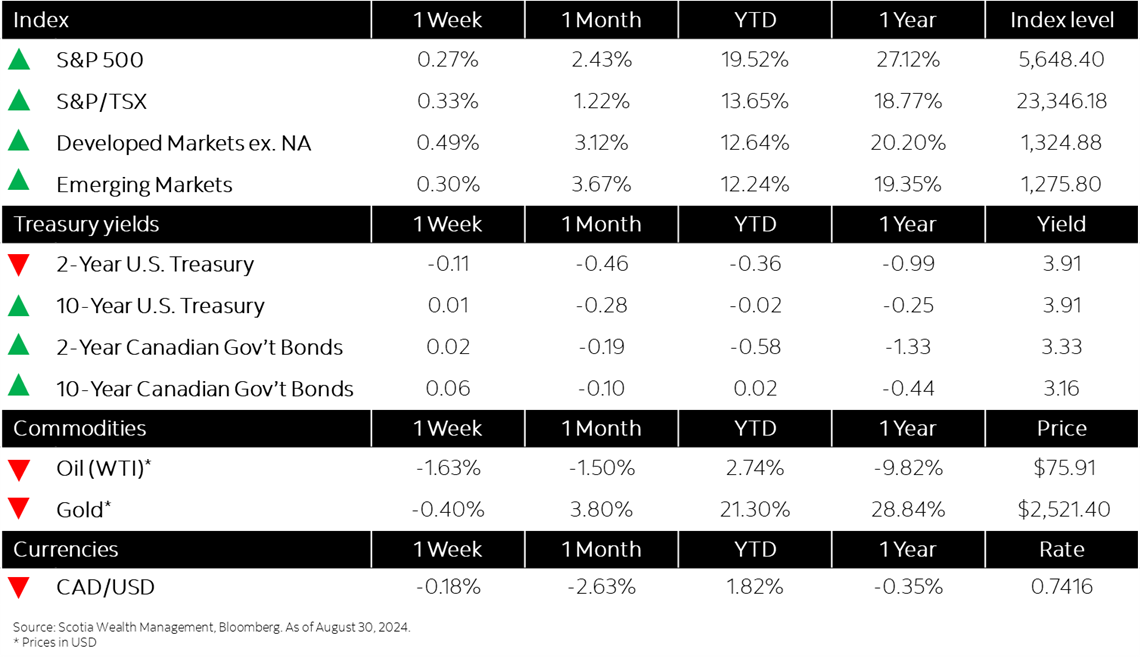
Market Watch: Aug. 30, 2024
This week’s highlights
- Markets fluctuate on earnings and economic data but close higher for the week
- Bond yields mixed amid economic data and corporate activity
- Canada’s Q2 growth surpasses forecasts amid spending surge
- Fed’s preferred inflation gauge stays on cooling trend
- Weak German consumer confidence adds to economic woes
- In the news: Analysts trim crude price forecasts amid ample supply, anemic demand
Week in review



